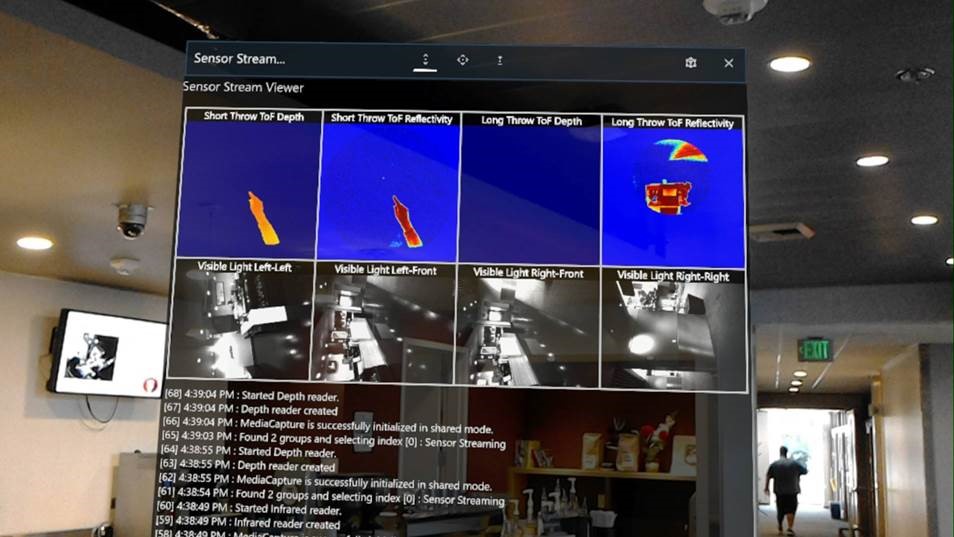Note
Access to this page requires authorization. You can try signing in or changing directories.
Access to this page requires authorization. You can try changing directories.
This article describes the conference session HoloLens as a tool for computer vision research, held September 8, 2018 at the European Conference on Computer Vision (ECCV) 2018.
Microsoft HoloLens is the world’s first self-contained, holographic computer, but it’s also a potent computer vision research device. Application code can access audio and video streams and surface meshes, all in a world coordinate space maintained by HoloLens’ highly accurate head-tracking. This tutorial session featured the new HoloLens Research Mode capability.
The tutorial showed how to access the raw head-tracking and depth sensor data streams, and use the intrinsic and extrinsic parameters of each stream. The session also demonstrated recent advances in time-of-flight depth-sensing technologies in the Kinect for Azure project.
Session attendees got a good sense of how to use HoloLens for a range of computer vision research tasks. Attendees received materials to help them quickly get started using HoloLens.
The following image shows a sample HoloLens application that displays any of the six Research Mode streams in real time.

Session organizers
- Marc Pollefeys
- Shivkumar Swaminathan
- Johannes Schoenberger
- Andrew Fitzgibbon
Session schedule
- 0900 – Introduction
- 0930 – HoloLens Research Mode
- 1030 – Coffee break
- 1100 – Applications & Demos
- 1130 – Kinect for Azure Depth Sensor
- 1200 – Q & A
- 1230 – End
For more information and conference proceedings, see ECCV 2018.